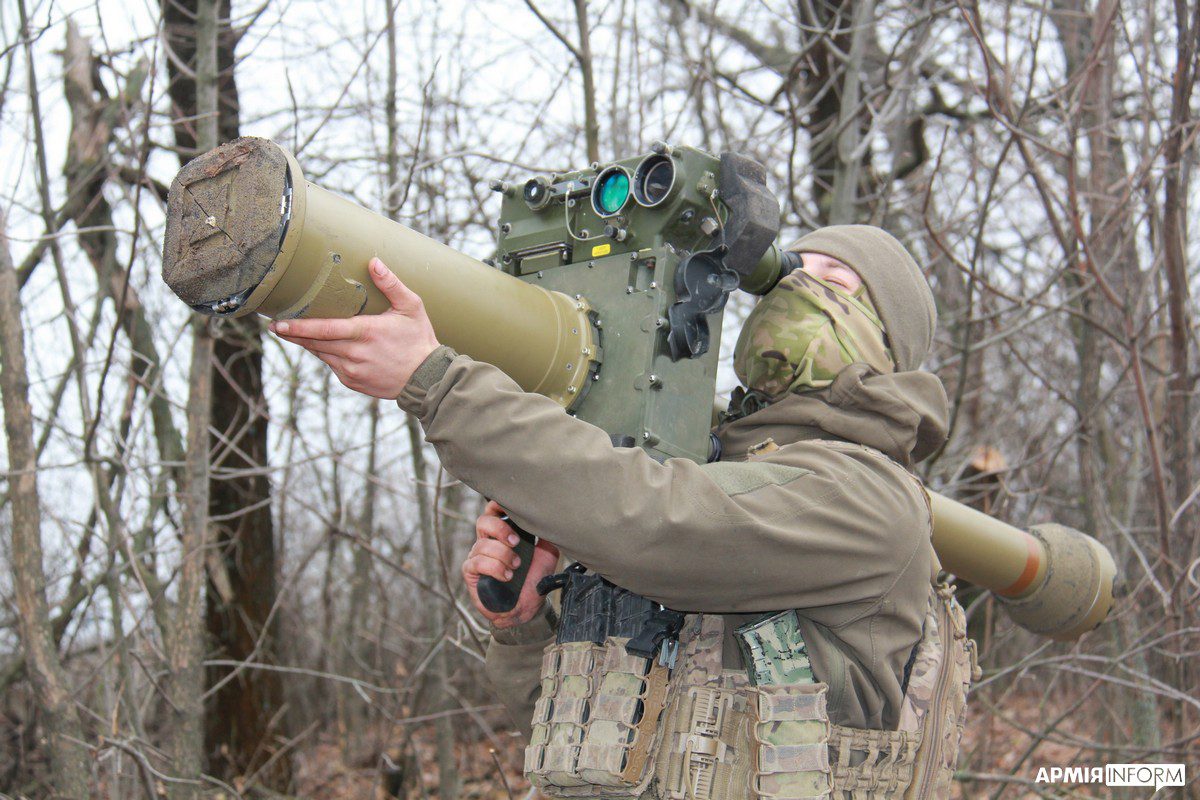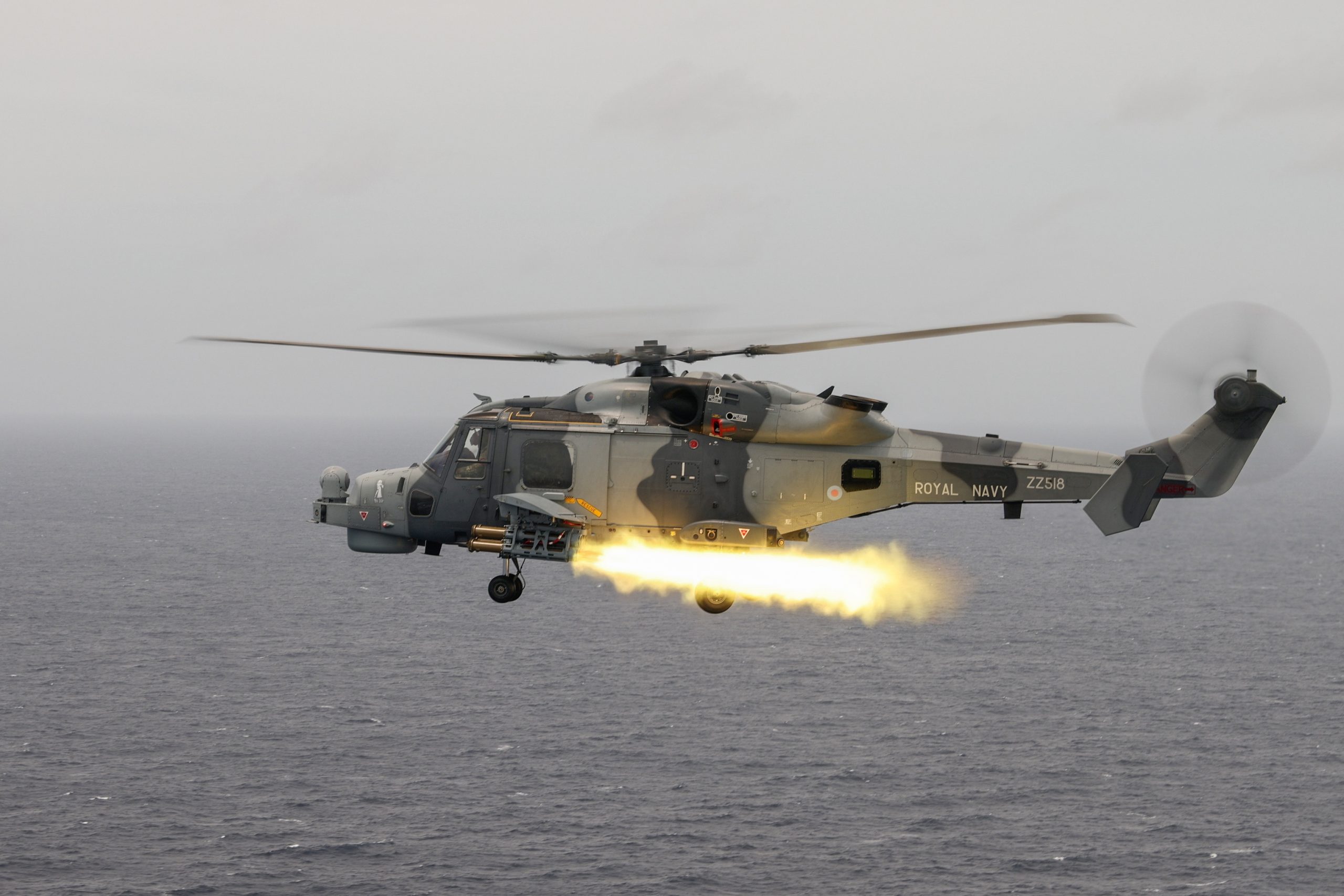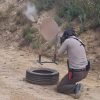Developed by the French defense giant Thales, the Lightweight Multirole Missile—better known as the Martlet in British service—is designed to counter modern threats such as drones, loitering munitions, and cruise missiles. Though compact and relatively affordable, its development history is filled with innovation, and its future appears just as ambitious. The LMM is rapidly proving that even lightweight missile systems can play a decisive role on the global battlefield.
A Missile Making Headlines
It’s rare for a small missile to dominate international headlines, typically reserved for strategic weaponry like nuclear arms or long-range systems. But in early 2025, UK Prime Minister Keir Starmer made waves by announcing a £1.6 billion (€1.92 billion) investment to deliver 5,000 air-defense missiles to Ukraine—a move widely interpreted by defense analysts as a massive order of Thales’ LMM.
This announcement followed the UK Ministry of Defence’s September 2024 deal, which allocated £162 million (€194 million) to supply Ukraine with 650 LMMs. According to the government, the full-scale order will not only reinforce Ukrainian defenses but also secure jobs for 700 workers at Thales’ Belfast production plant and create an additional 200 new roles, with hundreds more expected through subcontractors.
Thales: A Legacy of Innovation
Thales, which employs over 83,000 people globally, is headquartered in Paris and traces its roots to the French electronics company Thomson-CSF. After rebranding in 2000, Thales has grown into one of the world’s most important defense and security technology providers. Its missile expertise owes much to Shorts Missile Systems, the legendary British firm that helped pioneer lightweight air-defense systems.

The Heritage of Short Brothers
Founded in 1909 by brothers Eustace, Horace, and Oswald Short, Short Brothers was Britain’s first aircraft manufacturer. Over time, their Belfast-based company evolved into a missile systems leader. After a series of acquisitions and mergers—including by Bombardier and later Thomson-CSF—the company became part of Thales’ global network.
Evolution in Air Defense
Shorts made its mark in the 1970s with the Blowpipe, a man-portable air defense system (MANPADS) guided by radio control. While novel, the system required skilled operators to manually guide the missile using a thumb joystick—an impractical task under real combat pressure.
Javelin: A Smarter Successor
Not to be confused with the U.S. anti-tank missile of the same name, the British Javelin improved on Blowpipe by automating guidance. Operators merely kept the target in their sights while the system managed corrections. Though now outdated, it remains in service in several countries including Malaysia, Peru, and South Korea.
Starburst and STARStreak
Combat experience in the Falklands War revealed Blowpipe and Javelin’s susceptibility to electronic jamming. To counter this, Shorts introduced the Starburst, a laser beam-riding missile system, which offered greater resistance to electronic interference but suffered from performance issues in poor weather.
Then came STARStreak, a leap forward in capability. Featuring three high-speed tungsten darts each with 450g of PBX-98 explosives, STARStreak reaches speeds over Mach 3. It combines kinetic impact with explosive warheads, capable of neutralizing even heavily armored helicopters and low-flying aircraft.
Enter the LMM (Martlet)
The Lightweight Multirole Missile (LMM)—or Martlet—is a next-generation system that builds on the STARStreak lineage. While not originally conceived as a MANPADS, Thales has developed portable and vehicle-mounted launchers to expand its flexibility across ground, air, and naval platforms.
Technical Specifications:
- Weight: 13 kg (launch)
- Length: 1.3 m
- Diameter: 76 mm
- Wingspan: 260 mm
- Speed: Up to Mach 1.5
Range:
- Air-launched (e.g., helicopter): Up to 8 km
- Ground-launched: Over 6 km
- Minimum effective range: 400 m (less ideal for urban combat)
Guidance:
- Primary: Laser beam-riding
- Air-launched: Semi-active laser homing
- Future variants: Infrared and GPS/INS-guided versions in development
Cost-Effective and Launcher-Compatible
One of the LMM’s strongest selling points is its cost-effectiveness—it’s significantly cheaper than the STARStreak while still compatible with its launch systems. This gives militaries flexibility to mix and match missile types depending on mission needs.
Launch Platforms
Despite being dubbed “lightweight,” some launchers are more suited for vehicles than infantry:
- Shoulder-fired MANPADS – A rapidly fielded variant for Ukrainian forces
- Stormer HVM vehicle-mounted launcher – Originally built for STARStreak
- LML (Lightweight Multiple Launcher) – 16 kg launcher + 19.5 kg missile pod
- LML-NG (Next Generation) – Lighter at 15 kg launcher + 28 kg pod, but still primarily vehicle-based
Naval and Aerial Applications
The Royal Navy’s Wildcat HMA Mk2 helicopters carry up to 20 Martlets for use against drones, fast-attack boats, and swarm threats. On ships, the LML-NG launcher offers modular defense against cruise missiles and UAVs—an affordable solution for navies lacking high-end missile systems.

Future Variants and Hybrid Systems
The LMM is not standing still. Key developments include:
- Fury / Free-Fall LMM: A GPS and laser-guided glide bomb variant being developed by Textron for use by drones and light aircraft
- Hybrid systems: Thales and MSI-Defence Systems developed the Seahawk Sigma, combining a 30mm cannon with Martlet launchers to provide layered defense
A Strategic Asset for the Modern Battlefield
The LMM/Martlet is a standout example of smart defense innovation—a lightweight, affordable, and adaptable missile that bridges gaps between traditional air defense systems. Whether deployed from shoulder launchers, armored vehicles, helicopters, or naval vessels, the LMM is becoming a vital component of 21st-century warfare. With growing interest from NATO allies and combat-proven deployment in Ukraine, its future looks bright.








